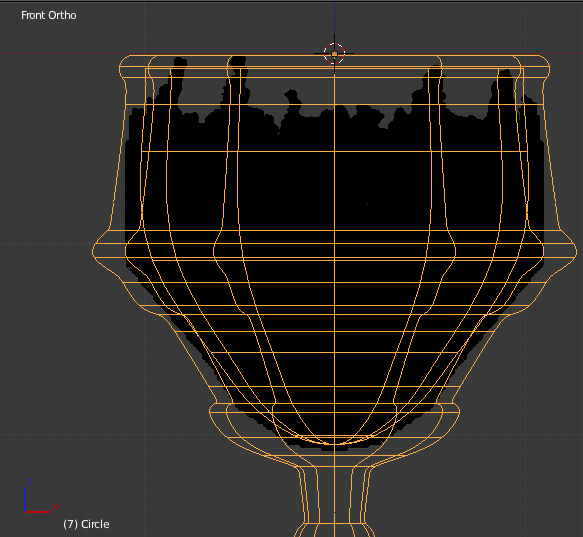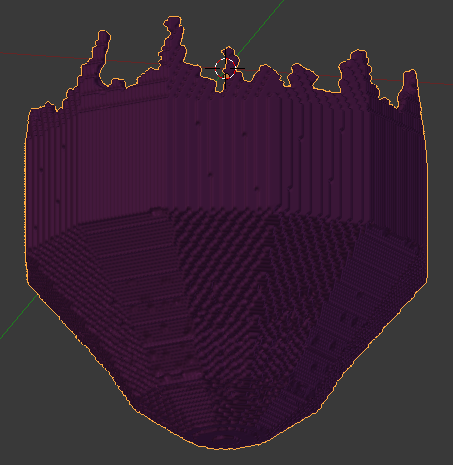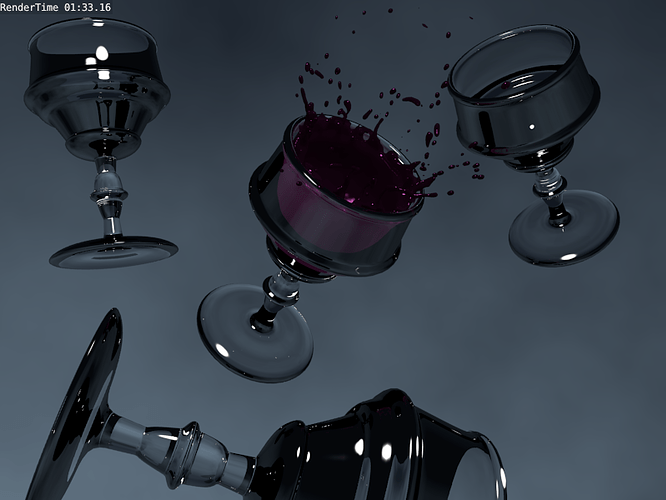Evening there. Well, I am almost about to cut me wrists. Yesterday I have been tackling some fluid simulation (from 4 PM to 5 AM), learning the ropes of it and such to make a simple glass cup with some wine in it.
Discarding my problems about how to get the wine material right (I failed on that so I stuck to leave it like plain water), I did several simulation renders on different resolutions (default, then 64, then 200, then 300), reducing the frames to 60 and leaving time to 1 and 2 seconds and SubDivisions to 2.
It didn’t matter the resolution nor the time nor the frames nor the SubD, the fluid always displayed this kind of straight artifacts (vertical and horizontal) whenever the water made contact with the glass (IOR 1.400 - I like dense glass). Here the sample with 200 resolution and 2 SubD:
The center cup (where the fluid was tested) has a very thick wall… I even thickened it on purpose and resized the sphere (the liquid) so that when it fell on it it wouldn’t leak in between the walls of the model (what I thought it was on blame). No matter the thickness of the walls, the fluid would make those odd streaks in all the frames where it displayed the fluid slipping along the surface inside the cup.
So my question is for anyone with more experience with the Fluid Simulator, what is causing these artifacts to appear? I thought the fluid would be looking smooth like I have seen in other people’s renders with fluids pouring with strength into glasses, bowls and the like with no glitches nor artifacts, but mine isn’t being quite cooperative.
Any ideas about why is not giving the expected results? ![]() Using 2.62 version.
Using 2.62 version.
EDIT: I was trying to check why the liquid would do those streaks, this time with the help of the key Z. I’m seeing that when the water makes contact with the inner surface of the glass, the next frame it “rockets” up and pierces through the inner wall of the already thick glass. Here is a sample:
The liquid goes through the walls in the end… but leaving that aside, isn’t there a way to prevent this without making the glass to look ludicrously thick? I say that due to the IOR of the glass; if I make it more thick, it will distort the images more and that will make it less realistic, I think…
I’m going to make the inner walls thicker and bake the liquid again to see if that fixes the streaks. Will update shortly if I see any improvement after doing that.


 ). Thanks again for the help guys
). Thanks again for the help guys 

